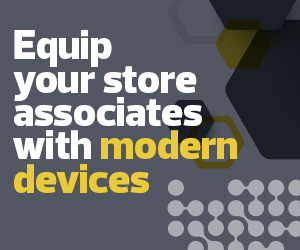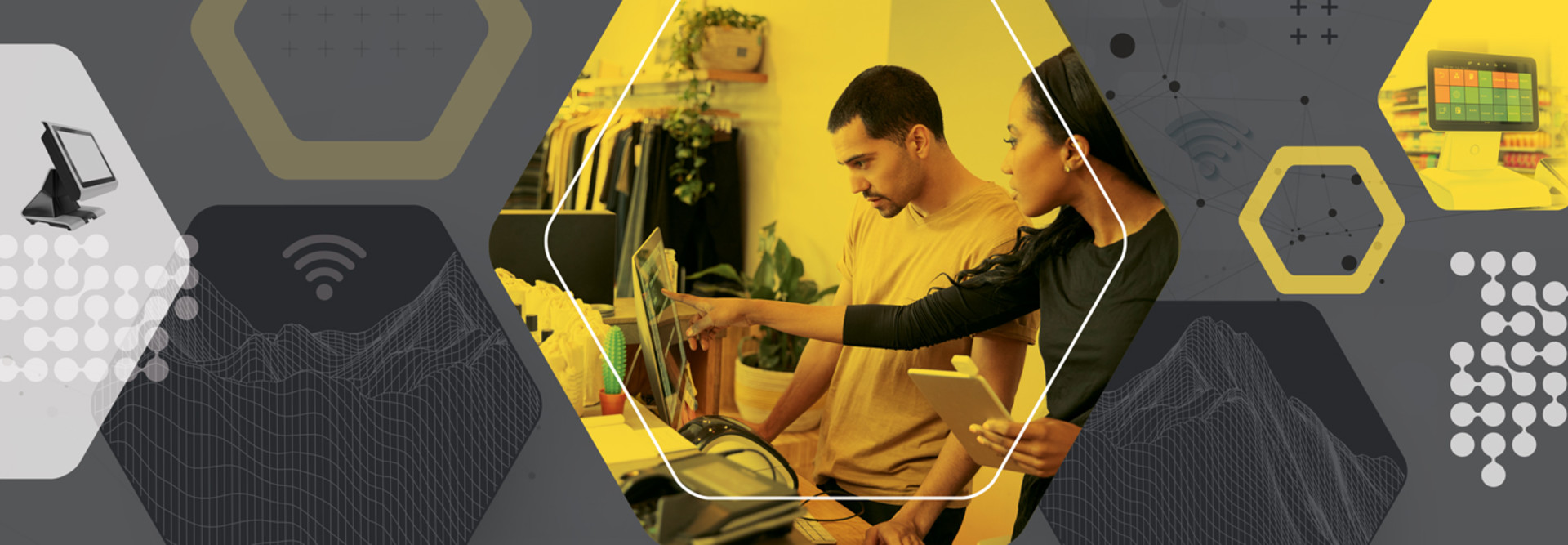For retailers, mobile point-of-sale (POS) hardware works in tandem with cutting-edge applications to expedite checkout and provide the most up-to-date data on inventory. Consider this phenomenon the modern cost of doing business.
So, just what POS hardware are stores using to make customers’ checkout experiences smoother? And what data are retailers gathering from these solutions? Read on.
Why Retailers Are Modernizing Checkout
It would be impossible to talk about modernized checkout without first discussing why it has become so necessary. “The pandemic resulted in a loss of foot traffic, lost ability to engage with customers and an increased focus on e-commerce,” says Wali Azim, CDW’s district sales manager for the Pacific Northwest.
Consequently, the pandemic became a boom time for online shopping, and with that, “there was a need to create some kind of consistent customer experience across all engagement channels, online and offline,” Azim adds.
As a result of doing so much online shopping, “today’s consumer is more educated than ever,” Azim says. “In a retail environment, being able to make a sale quickly is key because even while a customer is in your store, they can buy online from another retailer.” And people definitely don’t want to wait in line anymore: “If they go into a store at all, it’s for a very particular reason, but the minute they find what they want, they want more of an online checkout experience.”

That’s where the modern checkout experience comes in, allowing customers to shop as quickly and effectively in the store as they would at home.
While many features of modernized checkout were quickly gaining traction before the pandemic for their speed and convenience, COVID-19 accelerated demand.
The pandemic also created staff shortages, forcing retailers to do more with less. “You still had to stock shelves and provide an exceptional customer experience for those who did come into stores, but there was also BOPIS to contend with,” Azim says, referencing the option to buy online and pick up in-store.
That’s why giving staff handheld mobile devices to facilitate the entire shopping journey — from deciding what to buy to actually purchasing it — has become critical to a smooth checkout experience.
“I don’t see any evidence of staff shortages ending,” adds Tim Kane, retail industry principal with Zebra Technologies, one of the largest providers of handheld mobile devices to the retail industry.
Staff shortages or not, in business as in life, there’s no going back. Looking forward, then, retailers must embrace the modern checkout experience to continue to accommodate a population that has become accustomed to easy, expedited shopping.
Click the banner below to discover the best practices for modernizing retail checkout.


The Features of Modernized Checkout and Its Benefits
With a modernized checkout system, stores can connect with this post-pandemic consumer. Here are a few of its fundamental building blocks:
- Touchless payment. Even before the pandemic, touchless (also known as contactless) payment was on the rise, but it now has become common practice for hygiene as well as for convenience. Contactless payments are those processed through a mobile device or near-field communication technology, as in Apple Pay or Google Pay. Retailers that haven’t already adopted payment terminals capable of accepting contactless payments should make them a top priority.
- Contactless checkout. There are many services that fall under the contactless checkout category, and they go far beyond contactless payment terminals. What they have in common is that they don’t involve a line or interaction with a checkout person. Retailers are deploying options such as pickup lockers, self-checkout, curbside pickup, and BOPIS.
- Mobile devices. What could be better than walking into a store, finding what you need, skipping the checkout line and having the checkout person come directly to you? Retailers that have armed their staff with mobile devices, such as smartphones and tablets, have basically enabled this luxury. In addition to improving the customer experience, making it faster and more efficient, mobile devices help associates. They allow associates to provide information on products and availability and bring point-of-sale capabilities to the customer’s side. Availability is especially important when you consider that, according to Zebra’s 14th Annual Global Shopper Survey, more than 70 percent of consumers confirm they have recently left stores without all the items they wanted, with nearly half citing out-of-stock items as the reason for not making an in-store purchase. In addition to Zebra, technology companies such as Honeywell and Apple offer solutions in this space.
- Advanced kiosks. These stand-alone terminals can perform many functions, including transactional (electronic funds transfer), informational (what are your store’s hours?) and functional (printing something out). Suppliers include Ingenico, NCR, Verifone and ViewSonic. Much of what kiosks do is determined by software. They may be network-connected and incorporate video — it all depends on how they were developed. Kiosks can eliminate human-to-human miscommunication, reduce wait times, facilitate upselling and help optimize employees’ time.
Lessons Learned Via Modern Checkout
“Through machine learning, we’re starting to look at how much time each associate is spending with shoppers, how many shoppers are in store and so much more,” Kane says. “A retailer can use these analytics to look at whatever is relevant to them.”
Retailers may glean insights about why you went into a store, whether or not you found and bought what you were looking for, and your in-store “trail” (where you wandered and how you got there). All of this can help retailers set up their stores so that they’re as appealing and easy to navigate as possible, which is a win for retailers and consumers alike.












